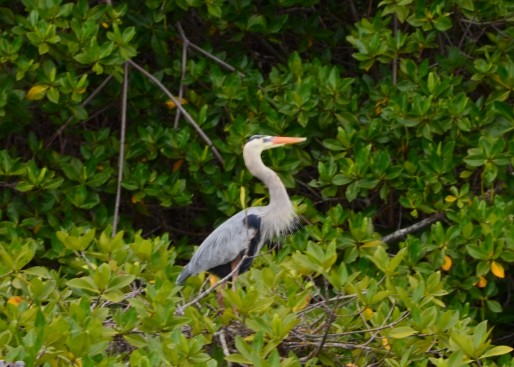
(December 5) A heron sits on a bush by the dock.
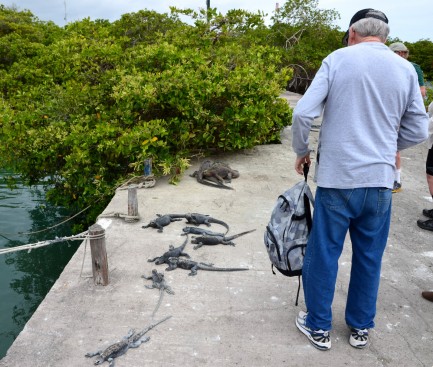
Marine iguanas sun themselves on the dock.
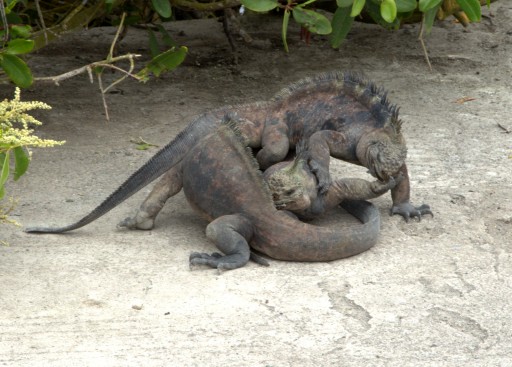
Three males wrestle to establish dominance.

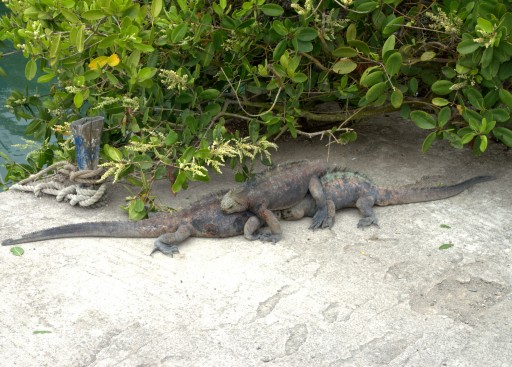
…Aaaand it looks like we have a winner!
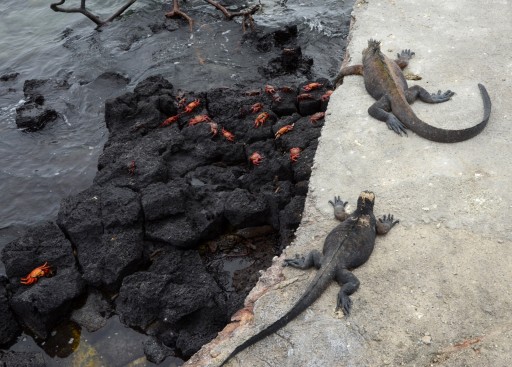
The Charles Darwin Research Station, located just outside of Puerto Ayora, is dedicated to preserving the many endangered species of the Galápagos.

A prickly pear cactus on CDRS grounds. Cacti in the Galápagos tend to grow on long stems to protect themselves from giant tortoises and land iguanas.

Giant tortoises are probably the most photogenic endangered species. There are giant tortoises on many of the islands but each island has its own unique species and many are very rare. Placid and slow-moving, the full-grown ones have no native predators. The main threat has been from humans. All it takes to catch one is for 6 men to pick one up and carry it off.
From the 17th through the 19th centuries pirates and whalers would collect them as a source of fresh meat. A giant tortise could survive in a ship’s hold for months with no food and little water.
Later many tortoises starved because feral goats ate up most of the vegetation on their islands.
During the 1960s and early 1970s Asian fishing fleets bribed government officials to let them set up bases on the islands. When conservationists objected some of them retaliated by slaughtering hundreds of tortoises.
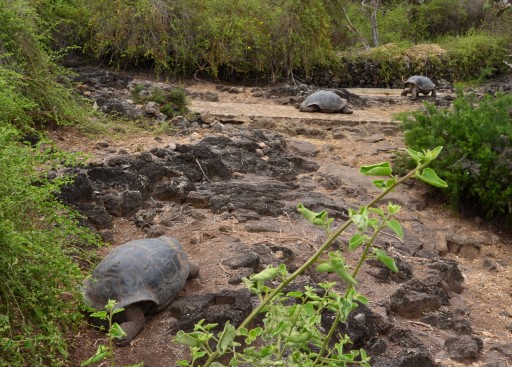
Here are rescued tortoises that people had been keeping as pets.
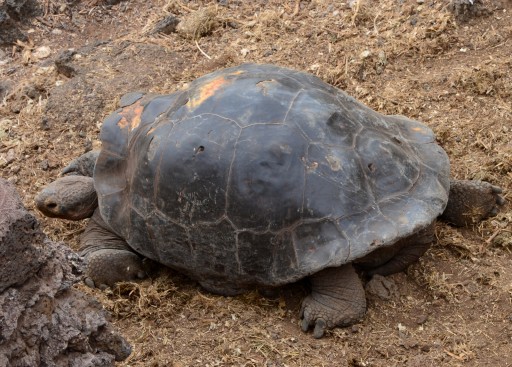
This tortoise was kept as the mascot of a military school which was very reluctant to give it up. From the damage to its shell it appears that cadets would sometimes fire pistols at it.
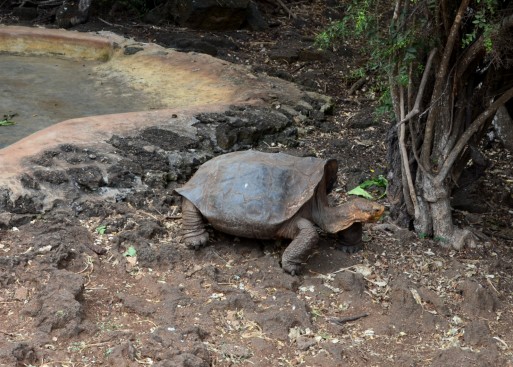
This is “Diego”, the second-most famous Galapagos tortoise.
In the late 1970s scientists found only 14 tortoises on Española Island, 2 males and 12 females. Which such a small breeding population the species had little chance of survival, so it was decided to move them to the Charles Darwin Research Station and set up a controlled breeding program.
Unfortunately when breeding time came the two males just sat around munching their cactus and wouldn’t do anything. The scientists sent a desperate plea to all the zoos of the world, asking for an energetic male tortoise from Española.
It turned out that the San Diego Zoo in California had a male tortoise taken from Española in the 1930s, so it was arranged to ship him to the CDRS. After all the bureaucratic hurdles had been surmounted he finally arrived. “Diego” sauntered out of his crate at full tortoise speed and went right to work. The scientists, and presumably the female tortoises were very relieved.
Diego is over 100 years old and today has over 1,000 descendents living on Española.
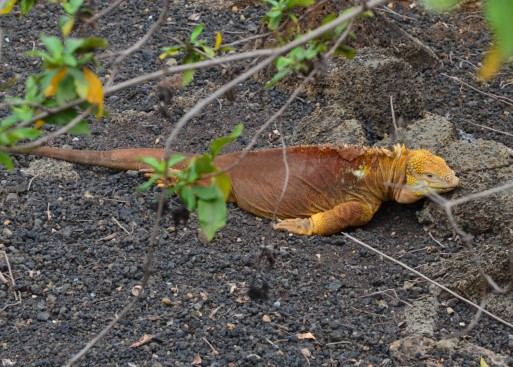
Many species of land iguanas are also endangered. Feral dogs are a major threat to them.
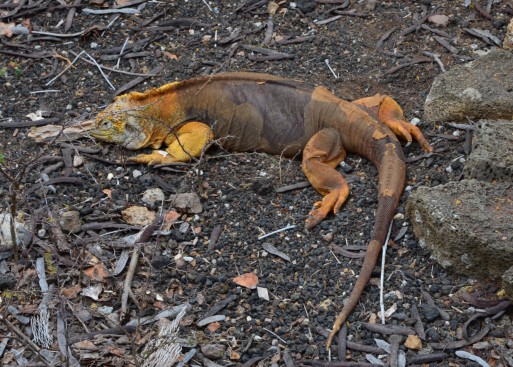
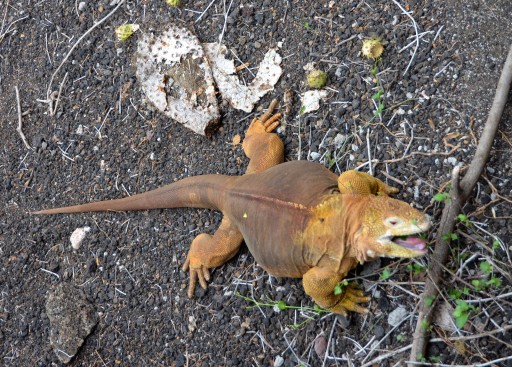

This is the corral of “Lonesome George,” the most famous Galápagos tortoise. He was perhaps 120 years old and was the sole surviving tortoise from the island of Pinta. Attempts to breed him with females from closely related species all failed.
George died in June 2012. The official cause of death was old age, but the guides suspect a cover-up. No one really knows how long a giant tortoise is supposed to live. The official report from the necropsy only said that his liver was discolored–which could be a sign of poisoning. Perhaps some farmer up in the highlands was using illegal pesticides and it somehow got into George’s feed.
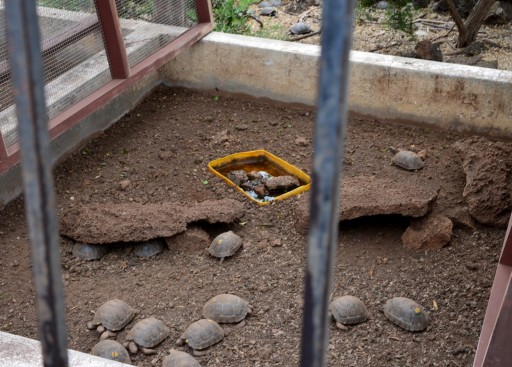
Baby tortoises from the breeding programs are kept until they are too large to be vulnerable to predators, then sent back to their native islands.


